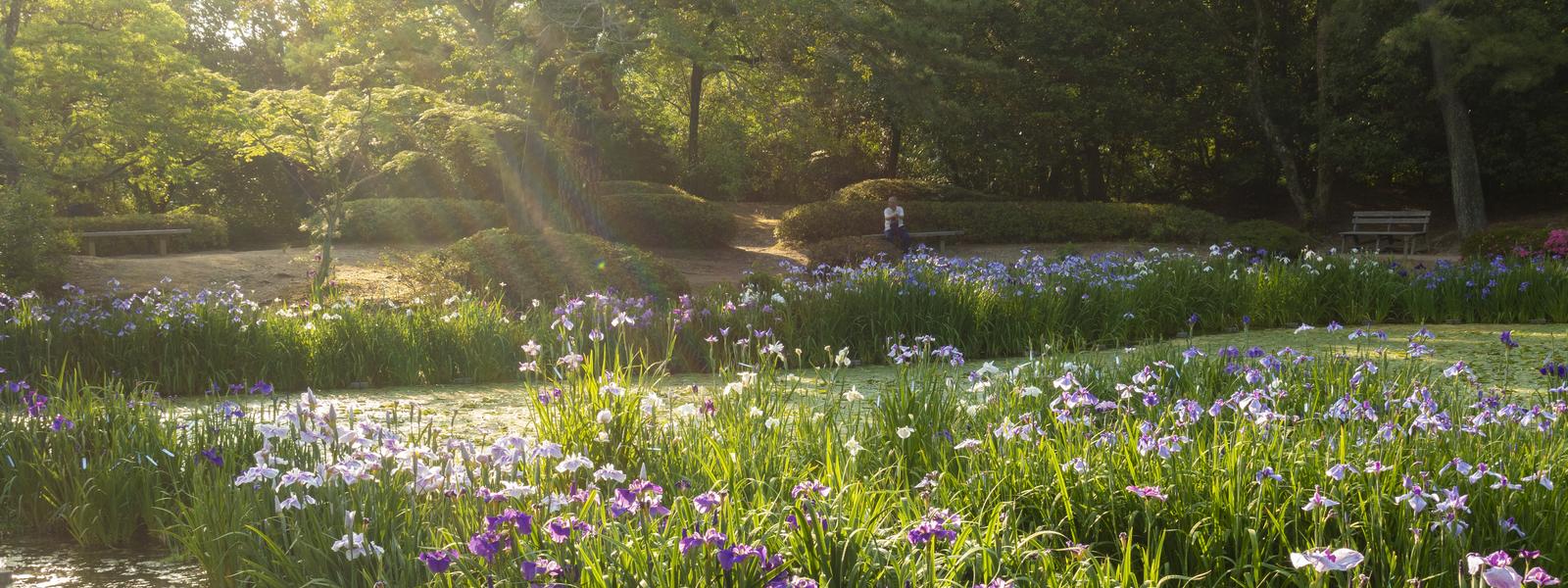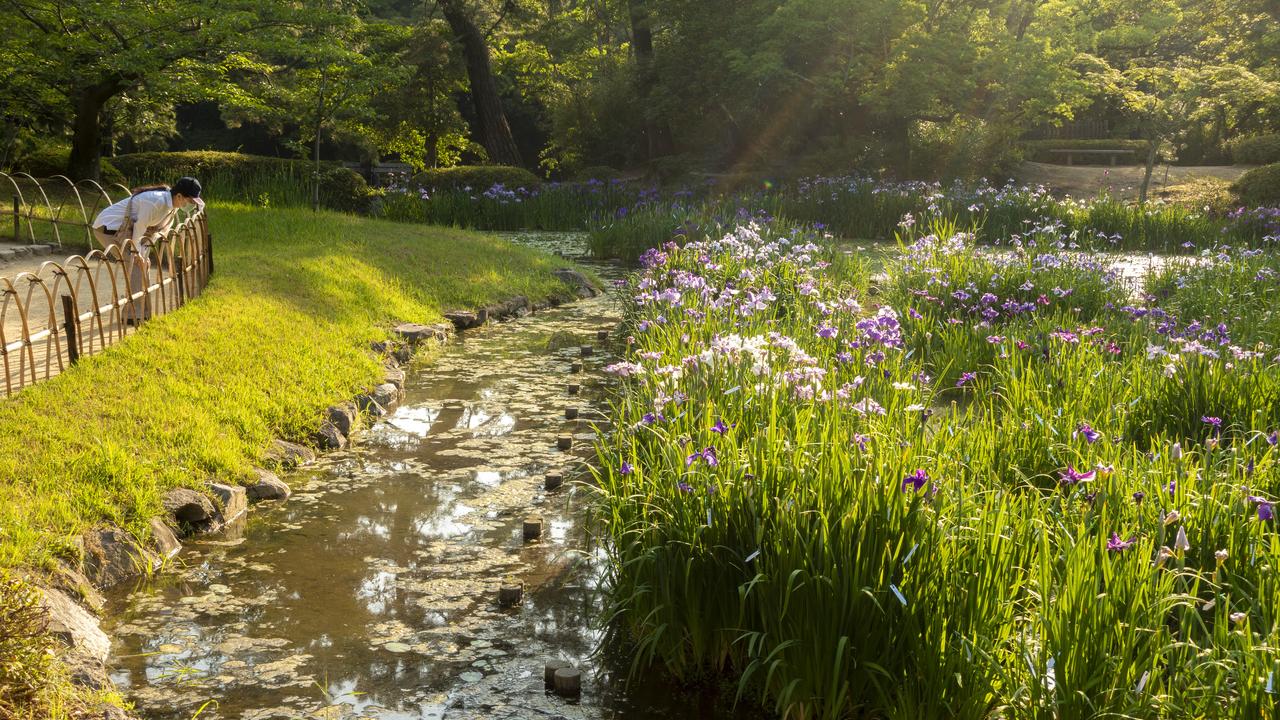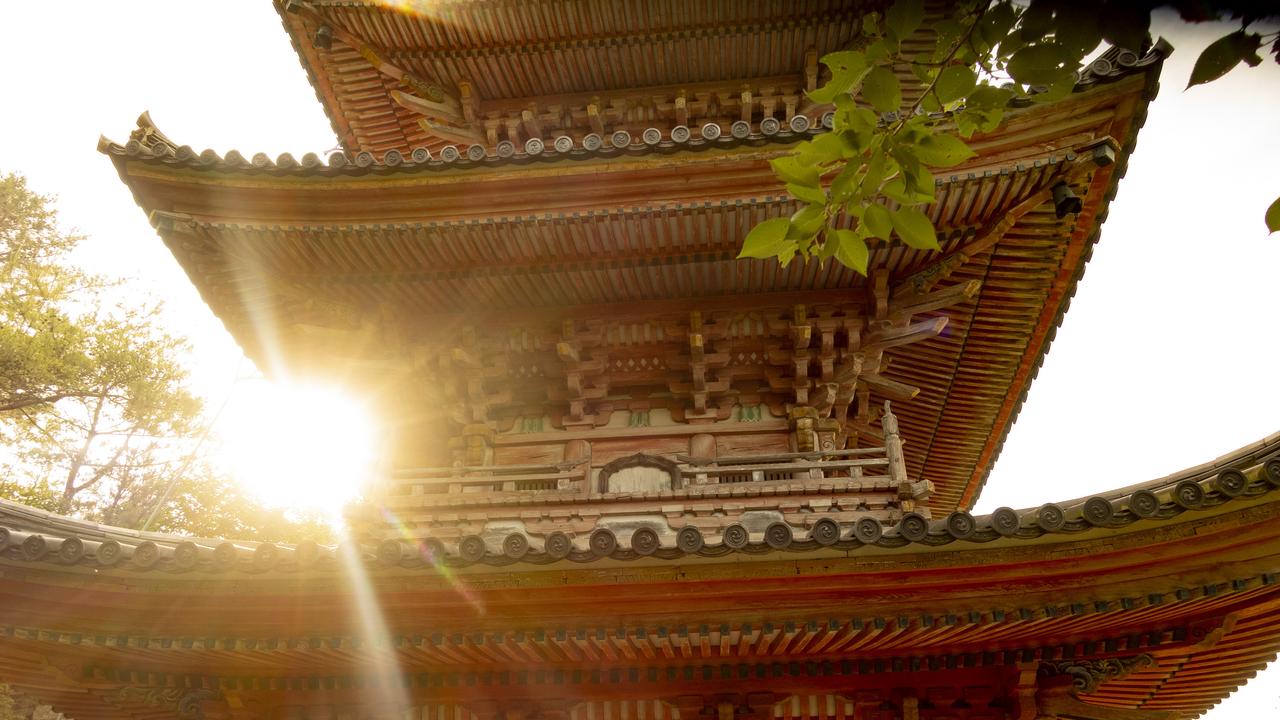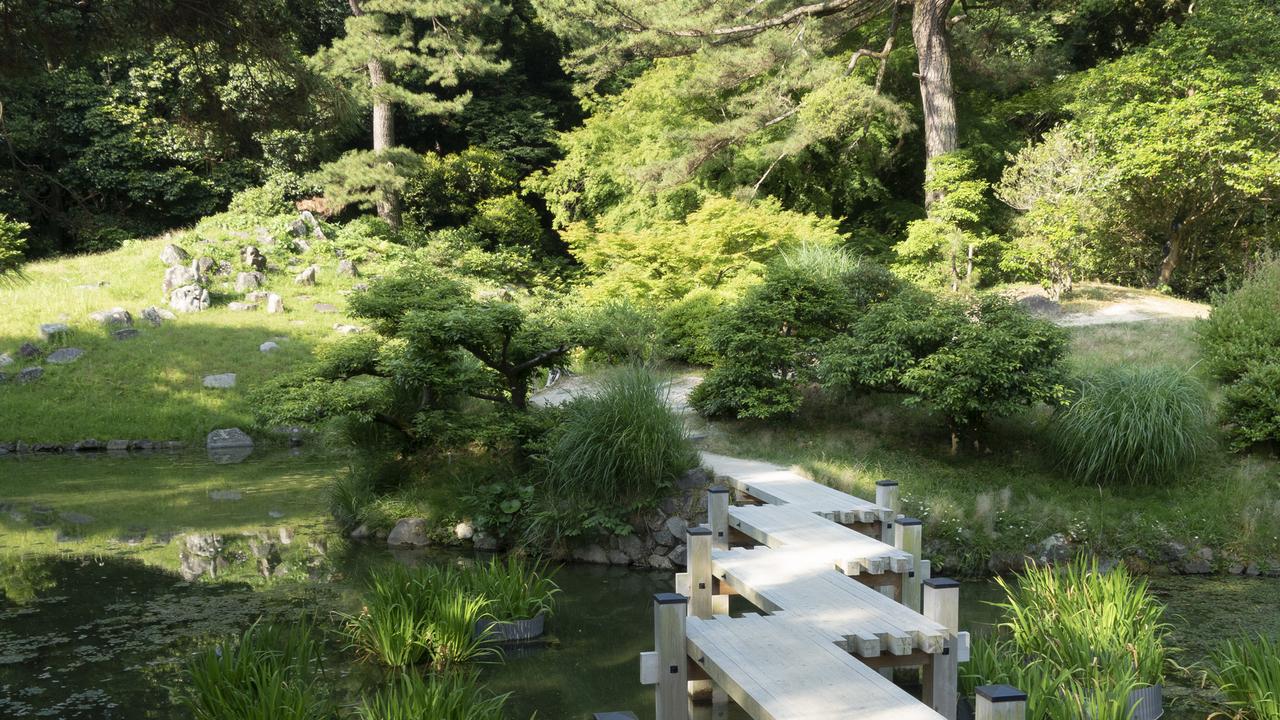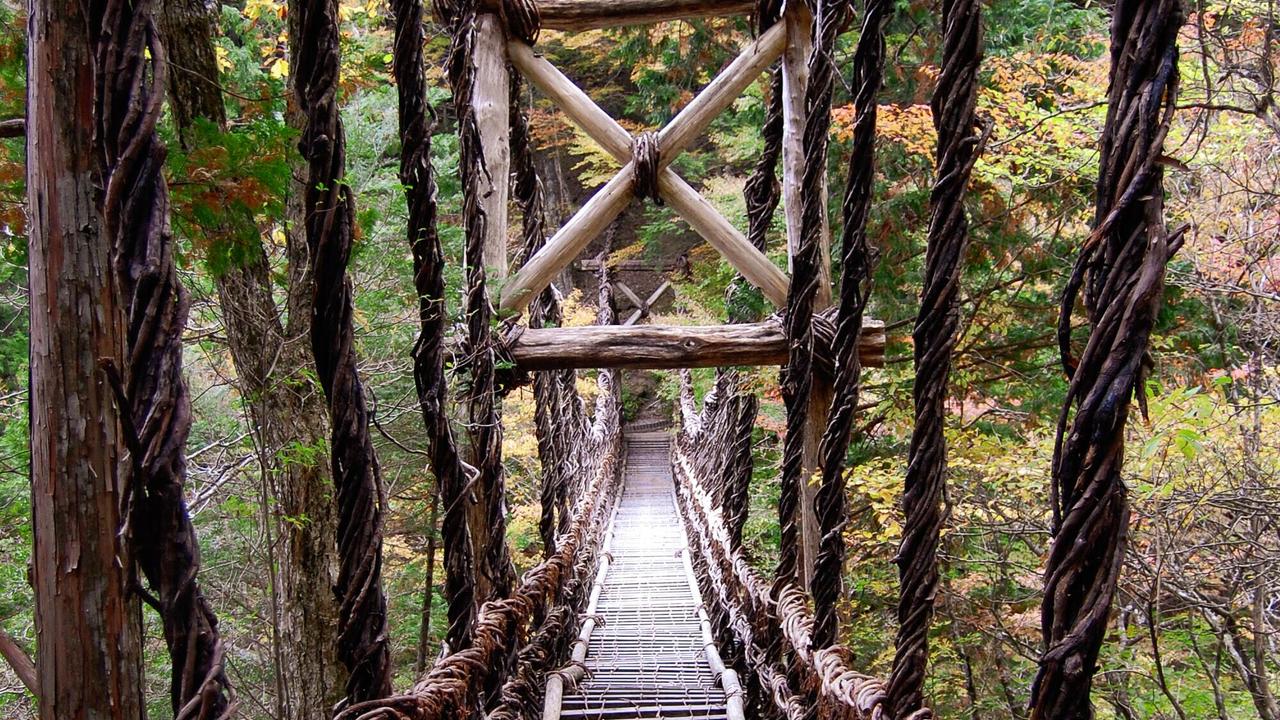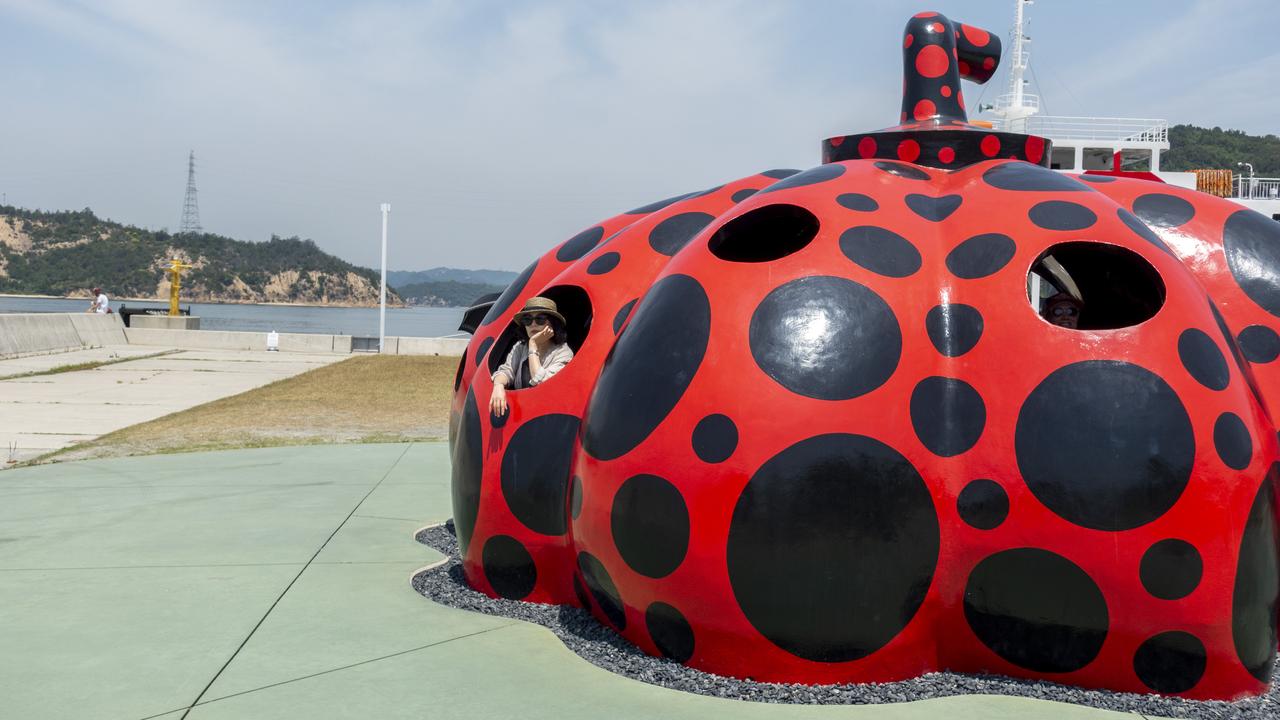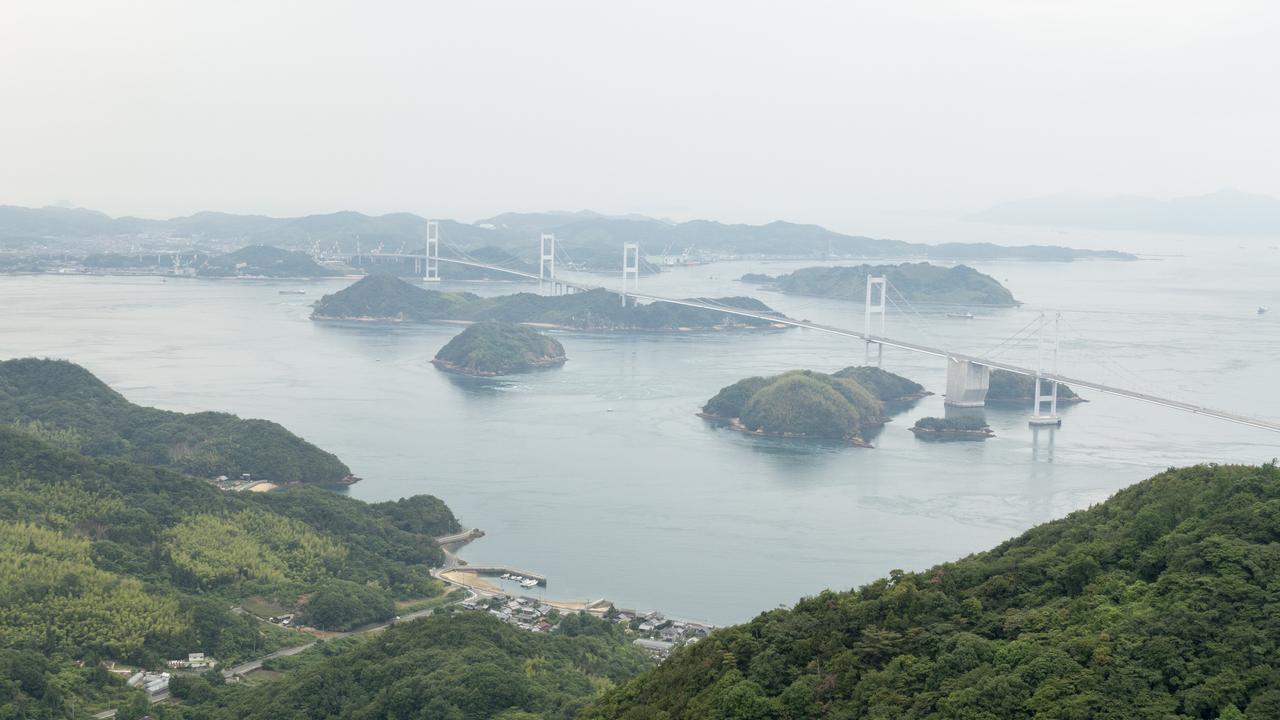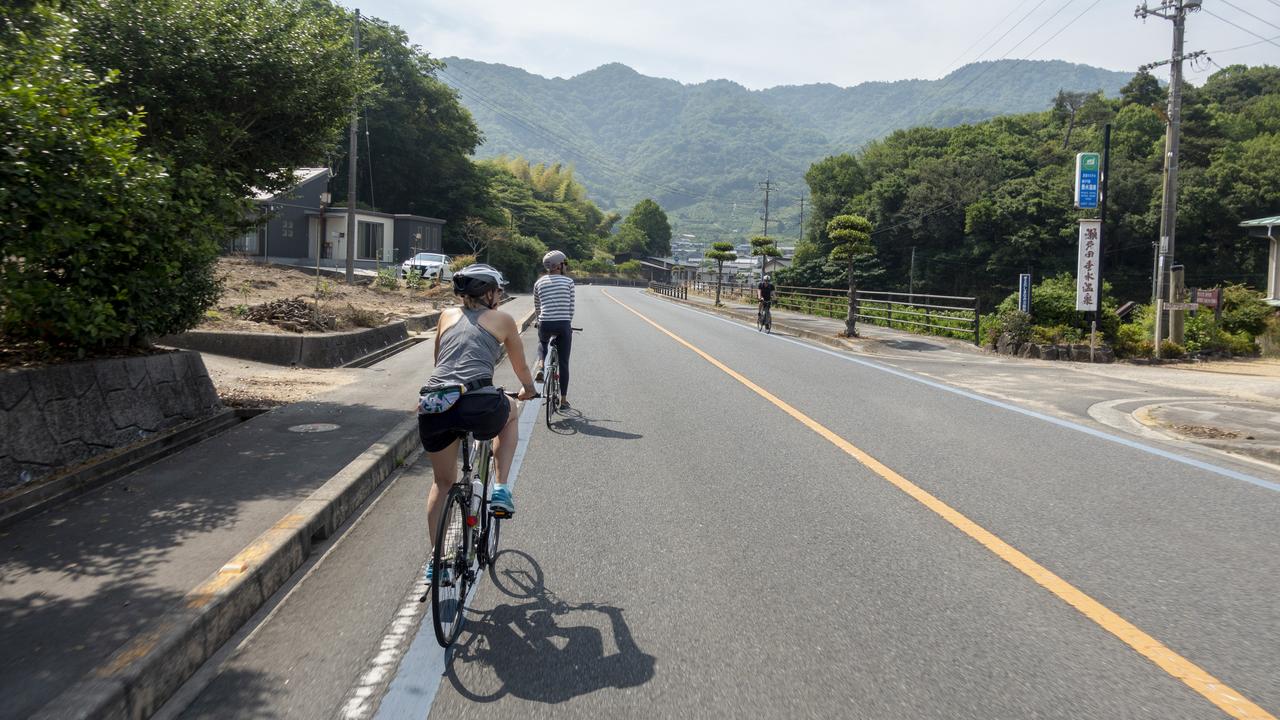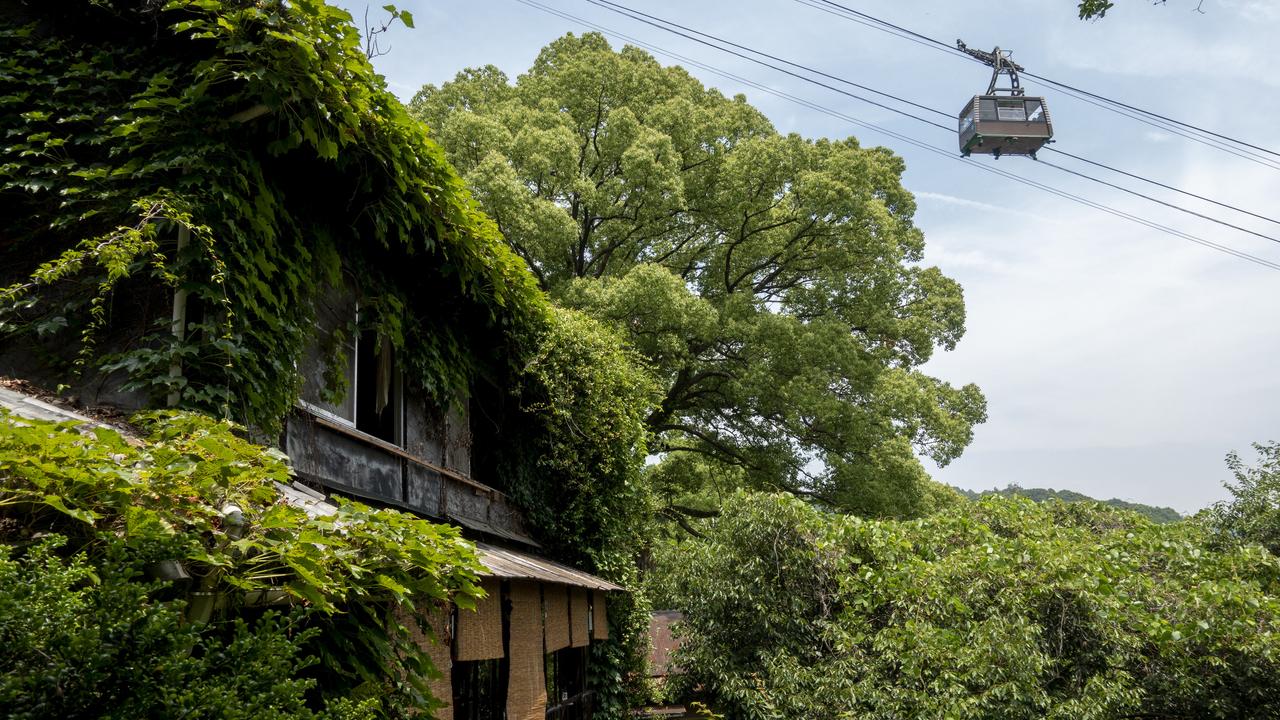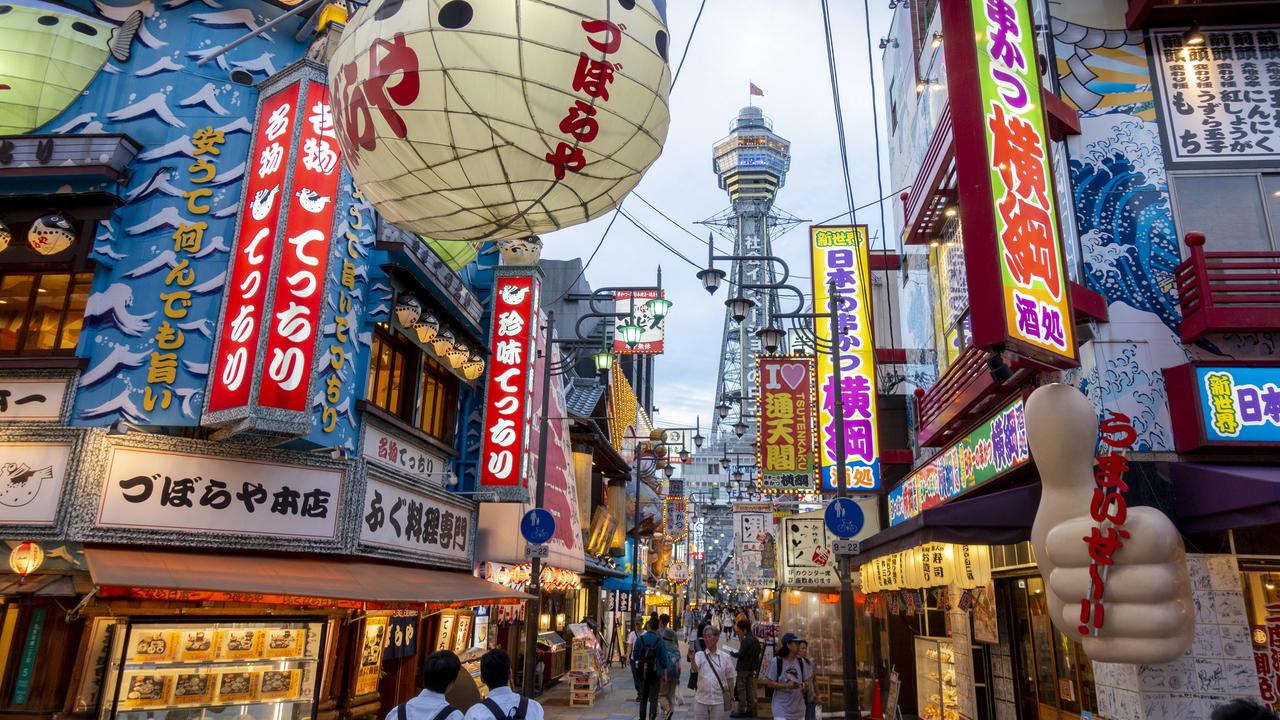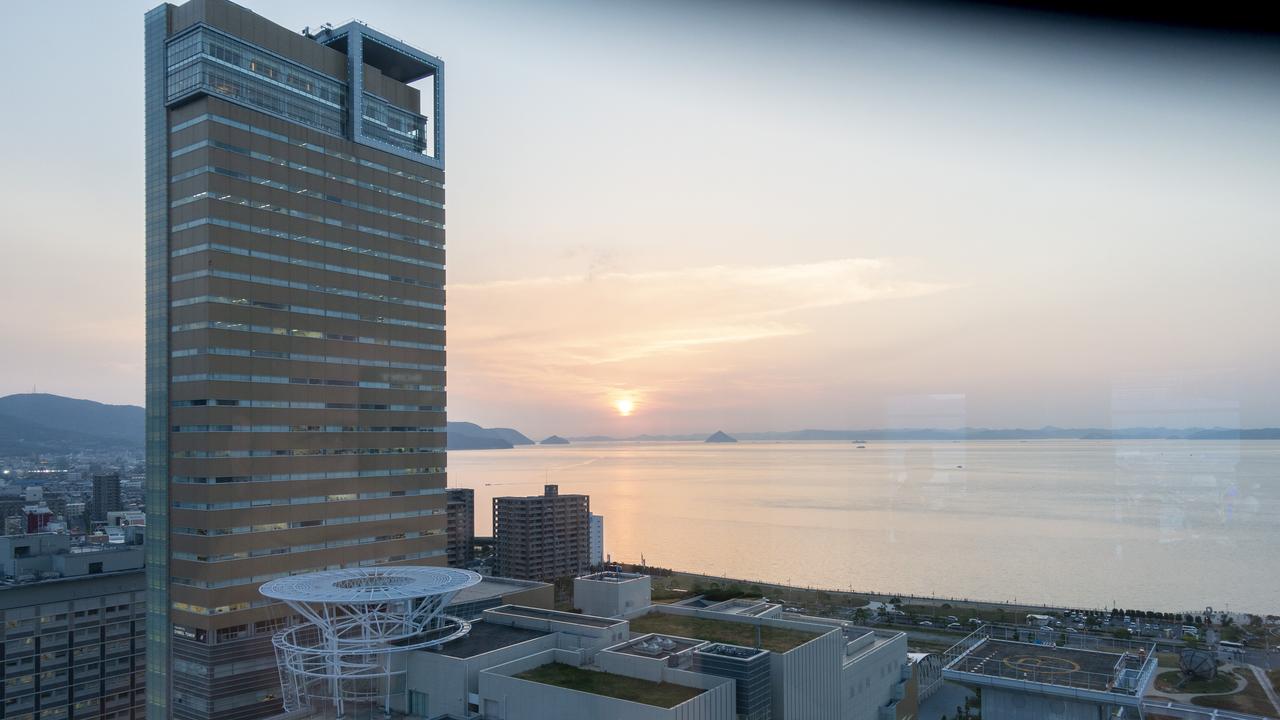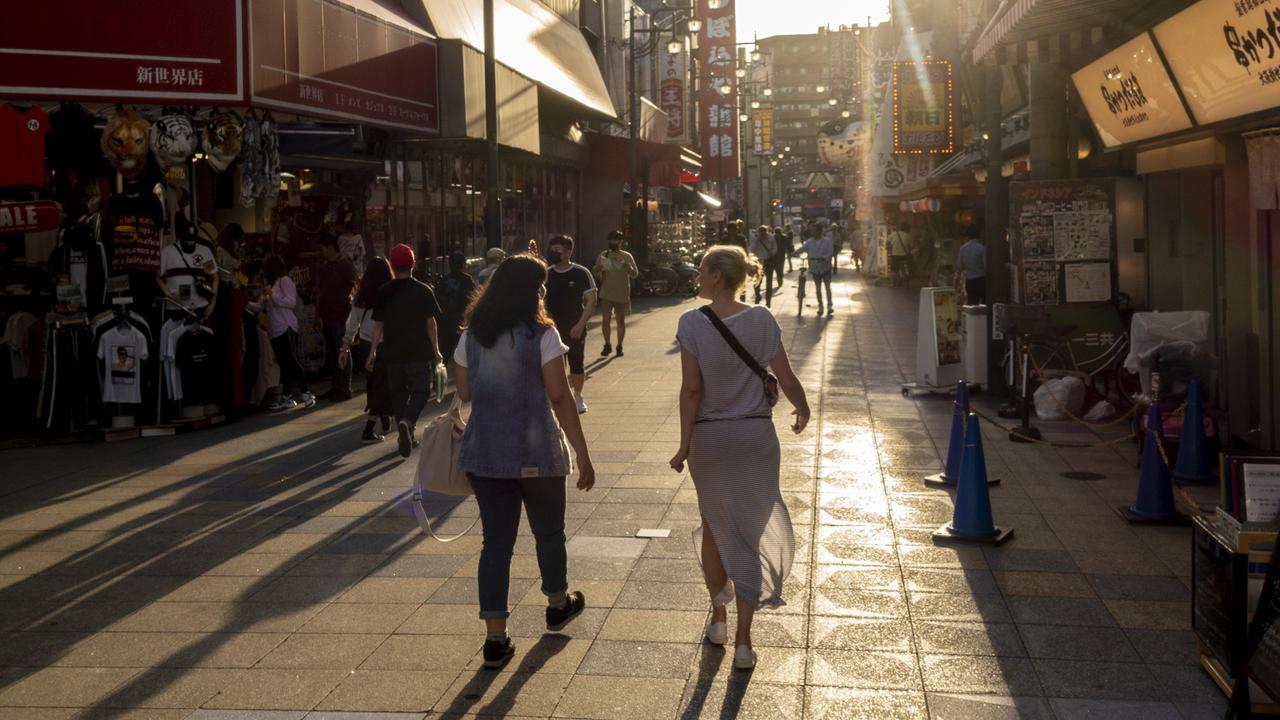A Yūgen Path to Shikoku
Sometimes we all crave time away from the rush; to slow down, be surrounded by nature and find tranquility in the moment. Shikoku is the perfect place to lean into this deeper, gentler side to Japan. Take a side-step from the ever-compelling Golden Route to embrace this lesser-known island and immerse yourself in the Japanese concept of yūgen: tuning into the present, appreciating a deeper beauty within the everyday, and connecting with a less frenetic way of life.
Starting from the bohemian bustle of Osaka, head to historic Okayama and across the water to Shikoku. Discover quiet towns with their own gentle rhythms, Edo-era castles held in time, ancient pilgrim pathways, and offshore islands where natural beauty meets modern art. Wander in elegant gardens, feast on nourishing comfort food, and relax at peaceful shrines and forest trails. Cycle past tree-covered hillsides, and visit a bath house immortalised in anime legend. If you’re keen to change up the pace, cycle the Shimanami Kaido trail, pausing to appreciate nature, architecture, cultural crafts and poignant art in equal measure - Selective Asia’s Sarah and Nick absolutely loved it.
Whether you’re seeing Japan for the first time or returning to explore further, the route less travelled towards Shikoku leads you to a core of history and culture that’s deeply connected to Japan’s natural heartbeat.
Make your way from Osaka to the folklore-rich gardens of Okayama, which herald the crossing from Honshu to Shikoku, and signal a change of pace. Stand on the line where art and nature meet in Naoshima, hop on two wheels to ride the Shimanami Kaido trail, and connect with a different side to Japan. Wander between trees in dappled sunlight, sense the breeze against your face, and soak up every moment.
Coastal energy
Osaka offers a different perspective on big-city Japan, through its mosaic of retro cityscapes, daily bustle and bright neon. This cool-as-a-cucumber coastal city isn’t focused on stand-out sightseeing, but rather getting down to the details. It’s well known for its utterly delicious street food, and miles upon miles of stalls and pop-ups selling every kind of edible treat, including okonomiyaki omelettes, takoyaki octopus rissoles and kushikatsu skewers. Wandering between street food vendors, snacking as you go, is the perfect way to spend your first evening in Japan.
Osaka does have its fair share of striking stunning sights to see too, if the mood takes you. Take in the beautiful pale-jade-roofed castle, the lofty observation deck, and the strikingly modern Isshinji Buddhist Temple. Osaka may feel loud and bold in comparison to the quieter rural vibes across the Seto Inland Sea, but it’s definitely one of Japan’s breeziest, friendliest cities, and an easy place to start letting yourself go with the flow. Free your senses, embrace the spirit of spontaneity and see where you end up.
Serenity on the Seto Sea
Edo-era gravitas runs through Okayama like a seam of precious metal, from the imposing black walls of the skillfully-revovated castle, to Kōraku-en, one of the three Great Gardens of Japan. The Bizen quarter hums with the industrious energy of artisan pottery workshops carrying on a centuries-old art. It’s the perfect bridge between the bohemian noise of Osaka and the ethereal ambiance of the Setonaikai islands. Look out over the rainbow-mirror surface of Lake Kojima, discover the painstakingly-beautiful details of the rebuilt castle, and pause in quiet enclaves to discover local life.
Just a little way out into the bay, is the breathtakingly beautiful Naoshima island. Suspended within the Seto Inland Sea, between Okayama and Shikoku, the island combines untouched natural landscapes with a scattering of striking structures and interactive artworks. The whole island is an evolving art project, with one of the world’s most talked about hotels - Benesse House - at its heart. Coming into port, you clock the island’s giant, polka dot Kusama pumpkin and you know you’re somewhere special. Spend time taking it all in, explore the landscape by bike, and soak up every drop of the island’s eclectic delights on an art-lover's pilgrimage.
Settle into a different rhythm…
As the former main entry point to Shikoku, before the Seto Ohashi Bridge was built, Takamatsu sets the island’s tone. Its Edo-era castle, in the centre of the city, is an alabaster-while counterpoint to the ebony-black of Okayama Castle across the water. The mild urban sprawl of tower blocks and interweaving streets gives way to the tranquil parks and wide, tree-covered hillsides that make it one of Japan’s greenest cities. This is a perfect place to pause, take stock and properly settle into the comforting rhythms of Shikoku.
Walk along winding pathways through the beautifully landscaped Ritsurin Koen, one of Japan’s Special Places of Scenic Beauty. It’s an idyllic spot to re-centre and recharge among lotus ponds, pagodas, irises and azaleas. Make a pilgrimage via funicular to the top of Mt Goken to pause at the Yakuri Temple and look down over the islands beyond. Browse stalls and shops in the town for traditional and contemporary crafts, get hands on with locally-led lacquerware workshops, and slurp a fortifying bowl or two of the region’s famously chewy sanaki udon noodles.
Protection of the Deities
Once you settle into the Kagawa region, it becomes second nature to start taking things more slowly. Allow yourself to be fully present, without worrying about the next steps, and you’ll get a glimpse of another elusive state: ichigo ichie, ‘one life, one meeting’, or learning to cherish the uniqueness of each moment. The small town of Kotohira is full of these opportunities for simple contemplation. The sense of history here runs so deep it’s almost palpable. Pause in the bright spaces of the Kanamaruza kabuki theatre and the spiritual walkways and dappled sunlight of Kompirasan shrine, and take it all in.
The Kompirasan shrine is what brings many visitors to the town, on a pilgrimage to honor the protectors of sailors and seafaring. In light of Japan being a multi-island nation, it’s clear why pilgrims from all over the country are drawn here to seek protection and blessing for those on the waves. The temple can only be accessed via a 1360-step climb, pausing to rest at noodle shacks and souvenir vendors along the way, so it’s not a journey to be taken lightly!
Step back in time
Lean into nature in Shikoku and it will eventually, inevitably, lead you to the Iya Valley. Here, in one of Japan’s remotest spots, Shikoku’s slow living ethos reaches its peak, and time seems to stand still. Dense trees and foliage smother the steep cliff sides, changing the valley from vivid green to burnished gold in autumn. A turquoise river wends its way between the rough boulders lining the valley floor. Centuries could pass as you stood there, spellbound, and it would feel like little had changed. Walk through thickly forested trails, and cross the vertiginous Iya Kazurabashi vine bridge - one of only three such bridges remaining in the valley - to look down the winding gully towards the horizon. Those who feel like turning the adventure up a notch can even embark upon white-water rafting expeditions down the river.
Away from the valley itself, you can carry on the folkloric feel at the eerie ‘scarecrow village’ of Nagoro, and get further insight into the region’s traditions and stories at the Higashi-Iya museum. Your reward for all that intrepid hiking, rafting and exploration? Plenty of time to unwind in the hot spring baths of Kazurabashi Onsen. Feel your muscles and mind relax as you soak in the hot mineral waters, either surrounded by nature in the outdoor rotenburo, or in cosy indoor baths.
Folklore & Inspiration
Shikoku’s folklore, fairy stories and ancient traditions seem to come to a crescendo in Matsuyama. Fans of Studio Ghibli’s beautiful animations will have felt familiar vibes from much of the landscape of Shikoku already, but Matsuyama is where the inspiration for some of the studio’s most famous works bursts into full 3D. The moment you see the decorative roofs and warmly-lit eaves of Dogo Onsen - the oldest in Japan, established an astonishing 3,000 years ago - the inspiration for the bathhouse in the Oscar-winning ‘Spirited Away’ becomes clear.
The Ishiteji Temple - a key spot on the Shikoku Henro pilgrim’s trail - offers shrine serenity and the intriguing chance to wander into the temple’s cool inner cave, home to dozens of Buddha figurines. Take a tram and ropeway to Matsuyama Castle, at the top of Mt. Katsuyama, where, in spring, over 200 cherry trees burst into magnificent blossom. As you’d imagine, it’s a popular spot for hanami, but visit in any other season to admire the view unhurried.
Bikes & Bridges
The Shimanami Kaido is a different kind of pilgrims path, leading cyclists and pedestrians across the magnificent bridges linking Shikoku with Honshu via another chain of Seto Sea stepping-stone islands. In keeping with the journey so far, there’s no rush; explore the route over a couple of days, pausing midway overnight, and give yourself time to savour the road less travelled.
Pedal along at a steady pace, following the clearly-marked path and pausing whenever you wish to appreciate the scenery. Cross from Imabari to Oshima on the magnificent Kurushima Kaikyo, the world’s longest suspension bridge, and find the perfect picnic spot within the stark, unspoilt landscape. Spend the night in sophisticated, cabin-style accommodation on Omishima, looking out over the bay, and investigate the island’s samurai history at Oyamazumi Shrine and museum. Hop back in the saddle for the final leg back to Onomichi on the Honshu mainland, and pause for a moment to catch your breath, holding onto that Shikoku serenity.
Where next?
Head back to Osaka to enjoy more of the town’s famous foodie delights, or continue to Kyoto and beyond to see what the rest of Japan has to offer. The country is your oyster…
A note on cost…
The guide price of £6,890US$8,990 is a per person price (not including international flights) staying a total of 2 nights in Osaka, 1 night in Okayama, 2 nights in Takamatsu, 2 nights in Kotohira, 2 nights in the Iya Valley, 2 nights in Matsuyama, and 1 night in Omishima, all in our favourite mid-range hotels.
